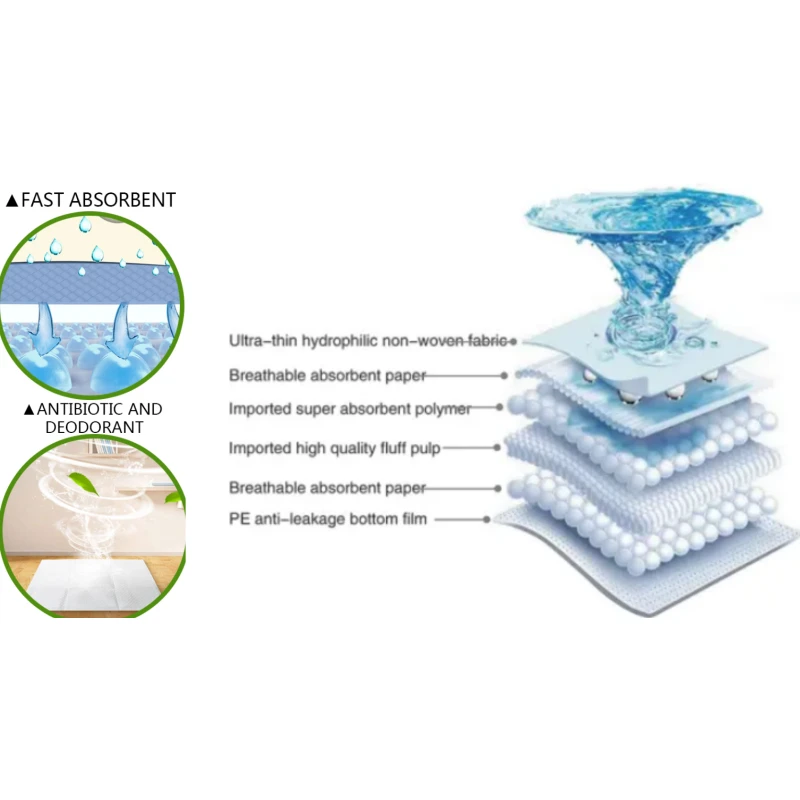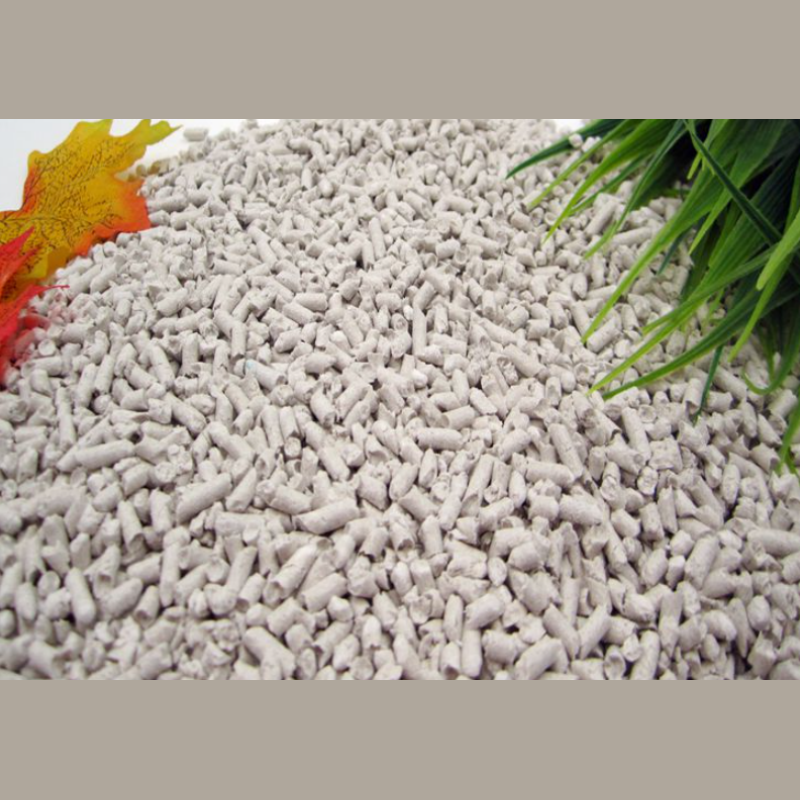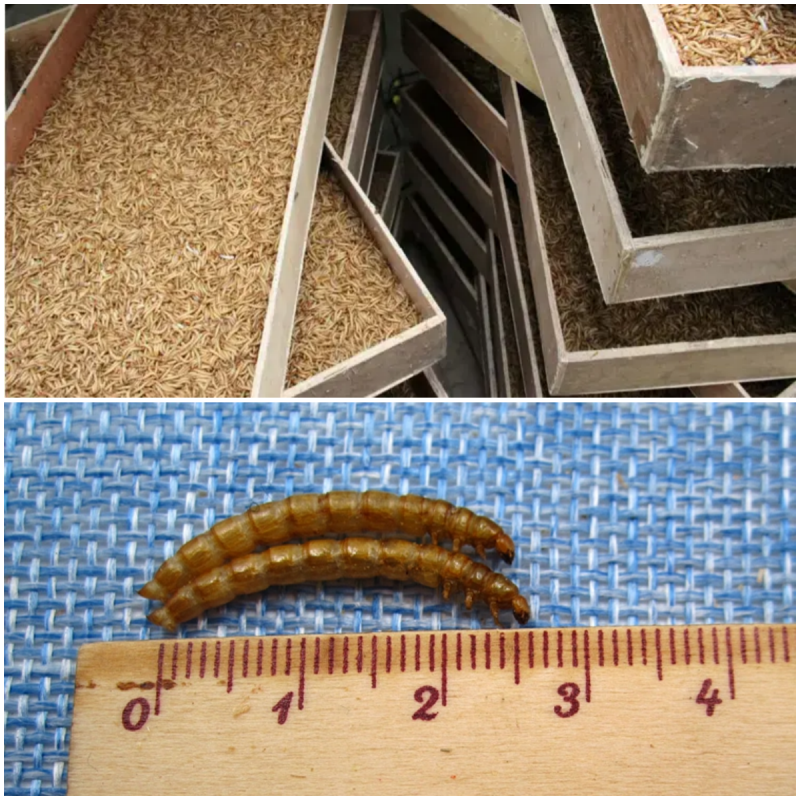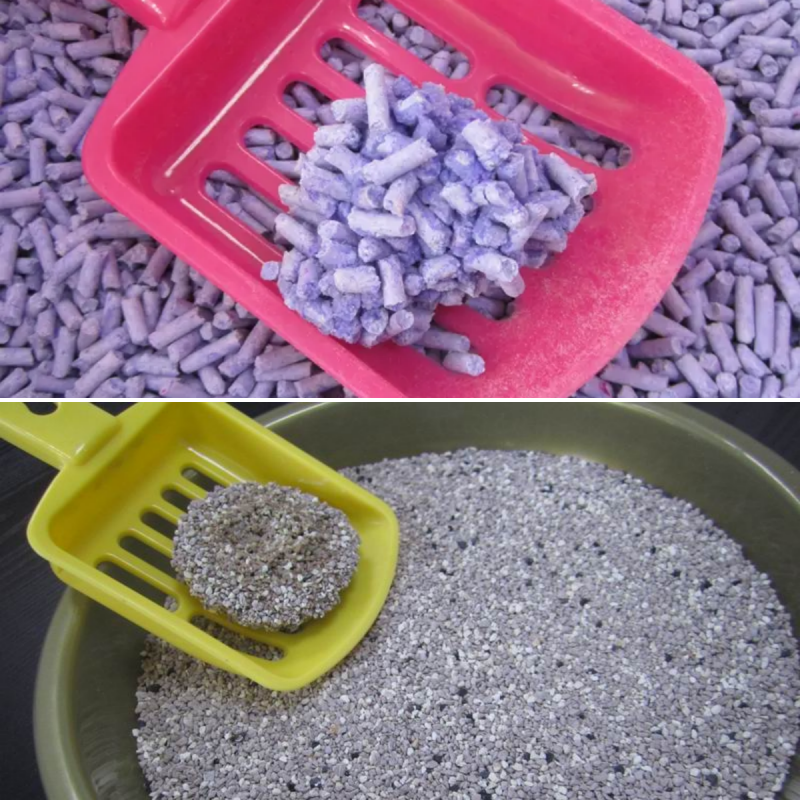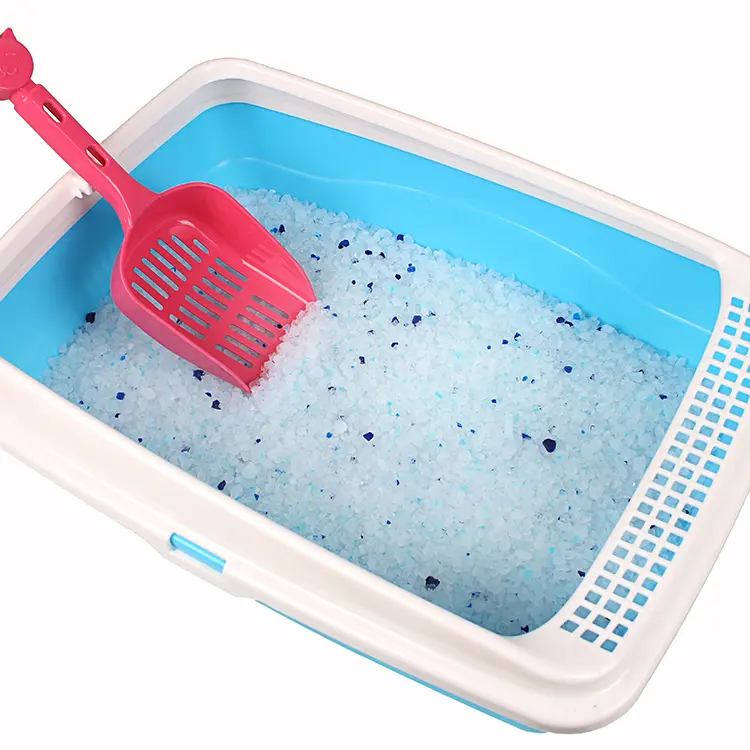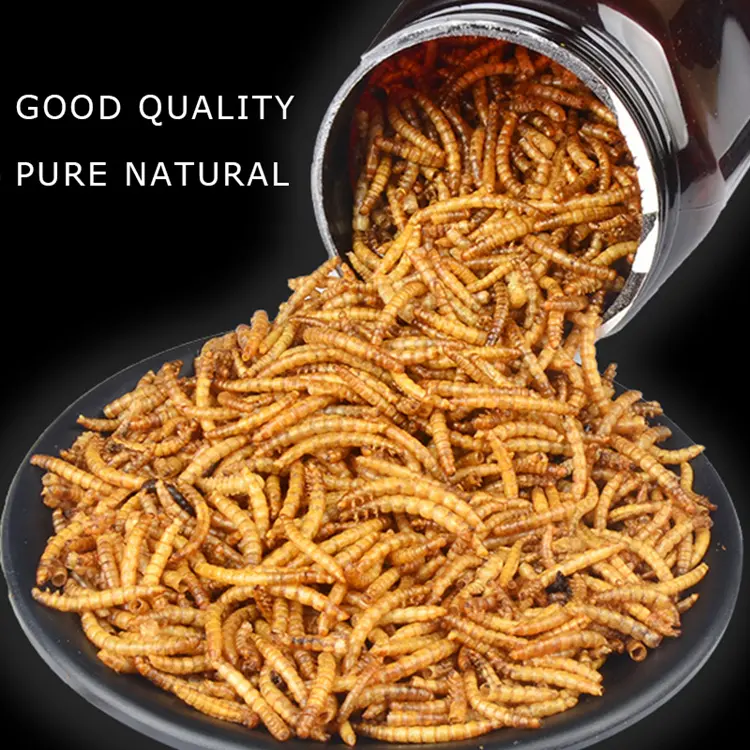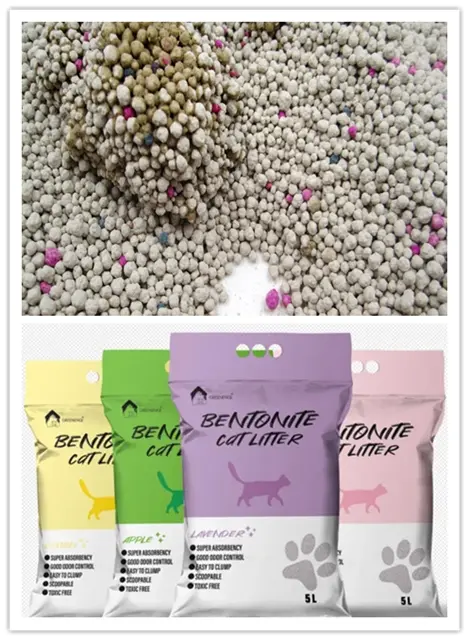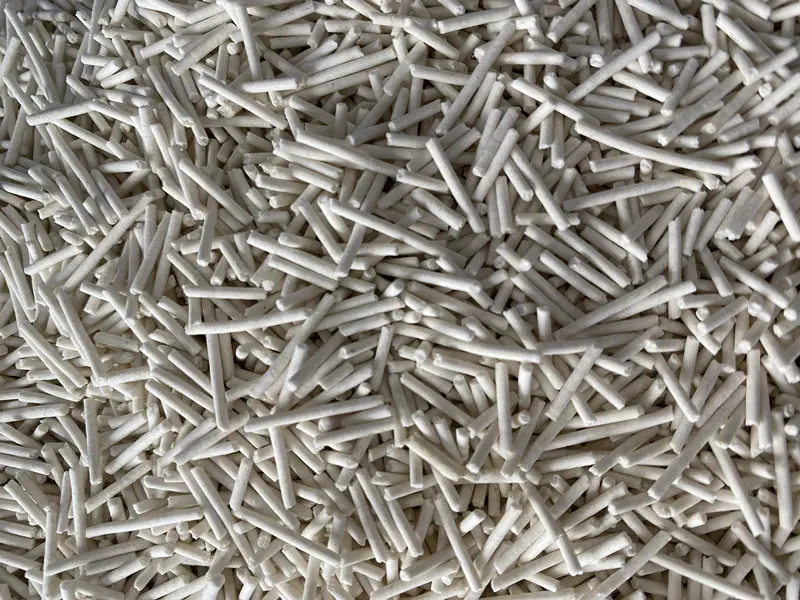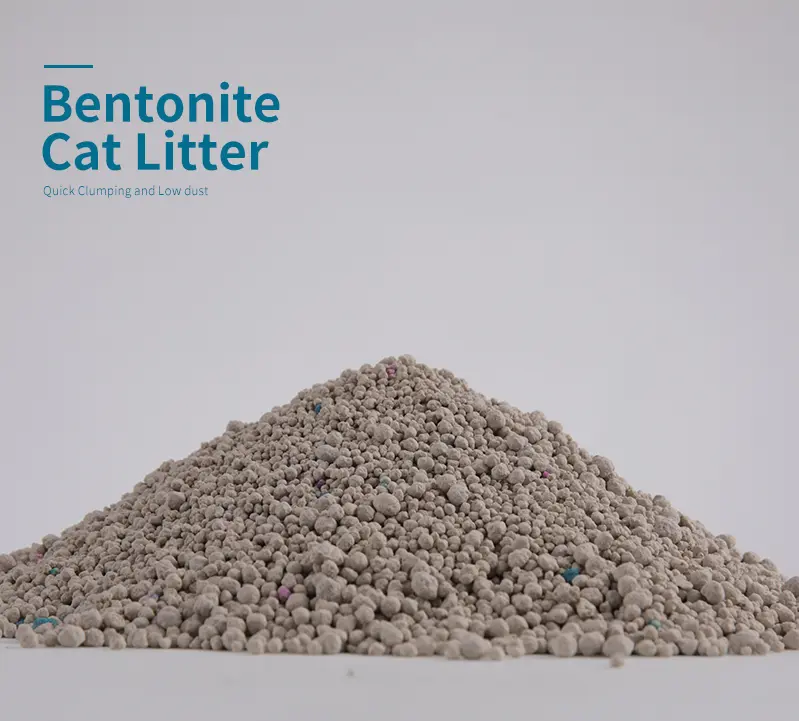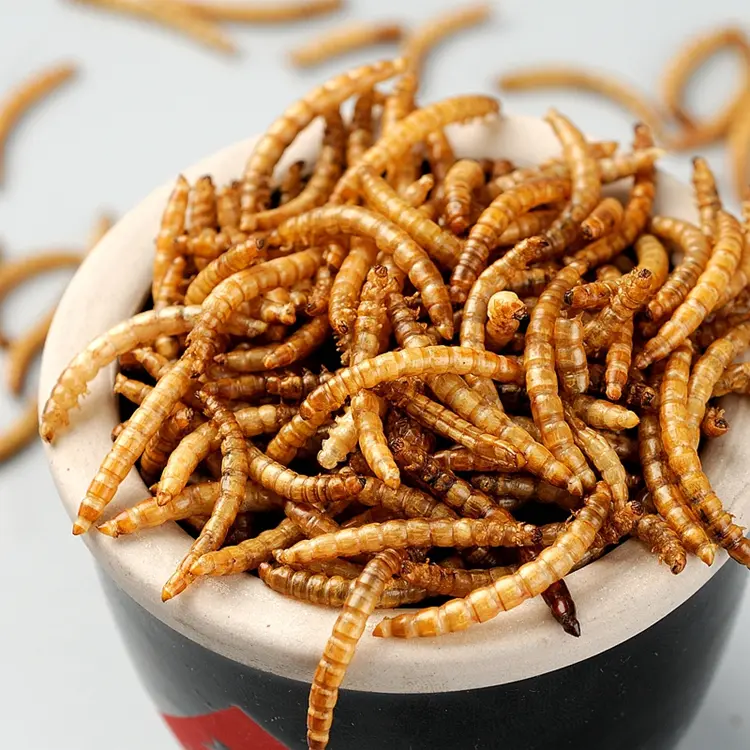Puppy pee pads (also called training pads) are a common tool for house-training dogs, particularly in early weeks, for small breeds, or when outdoor access is limited. But one of the frequent questions among new pet owners is: How often should you change them? The answer depends on several factors: the age and size of the puppy, how absorbent the pad is, how many times it has been used, the pad type (disposable vs. reusable), odor concerns, hygiene, and training stage.
In this article, we’ll review the available data, summarize best practices, provide helpful tables to help determine a plan for change, and finally demonstrate how Green Pet Care Co., Ltd.’s five-ply dog pee pad product aligns with these practices.
Why Frequency Matters: Hygiene, Training, and Puppy Comfort
Before delving into numbers, it's important to understand why changing pee pads often is critical:
Bacterial growth & odor
Warm, moist environments are prime breeding grounds for bacteria. Soiled pads (especially those with urine, and worse if feces) can rapidly develop microbial populations, which may cause infections or skin irritation in puppies. Plus, odor builds up, which may discourage the pup from using the pad, or might result in accidents elsewhere.Training feedback
For training, puppies need a clear signal of where to eliminate. If a pad is already soiled or smells strongly, it can reduce the puppy's motivation or ability to associate the pad with a “clean, acceptable” elimination spot. Some trainers mention that puppies may refuse to step onto a pad that is wet or heavily used.Comfort and well-being
Puppies prefer to avoid standing, lying, or walking on damp or smelly surfaces. If a pad is soiled, it may cause stress, reluctance to use it, or accidents outside the pad.Home cleanliness & human health
Soiled pads inside mean more frequent cleaning, odor in the home, and potential for flies or pests. Also, some people are sensitive to ammonia from urine.
Given these factors, pad change frequency is not just a matter of convenience—it impacts health, training outcomes, and household conditions.
Our five-layered, pet-specific dog pee pad features a super-absorbent core that instantly locks in urine and allows for rapid penetration. The quick-drying, anti-reverse osmosis surface keeps the pad dry and moisture-resistant. This provides a comfortable, no-burden feel for your pup while also preventing odors from spreading, keeping your home fresh and clean.
Data & Guidelines
Veterinary, animal shelter, and expert‐training sources provide guidelines based on experience. Below are key findings:
| Source | What it says about pad changing frequency |
|---|---|
| The Environmental Literacy Council | Recommends changing disposable pads every time the puppy uses them, or at least once a day. |
| NAHF (National Association Humane Foundations? a similar group) | Vets typically recommend changing as soon as it’s dirty, and again one or two times daily. |
| Porch Potty USA | Puppies younger than 12 weeks should have pads changed every 1-2 hours; for slightly older pups, every 3-4 hours, or as soon as soiled. |
| How to Potty Train a Puppy (PetMD) | Puppies under 8 weeks of age may need to eliminate every 1-2 hours, which means frequent use of pee pads. |
| FeelGoodHHS (Pet care blog) | Younger puppies (8-12 weeks), small breed or large breed, high or low activity – for example, every 1-2 hours for young, active small breeds; 3-4 hours for older pups. |
| Yorkie Universe | Suggests that a pad may be ready to change after “2-3 uses or about 12 hours,” depending on puppy and pad. |
Our puppy pee pad wholesale channel is now open! High quality guarantees a user experience, and affordable prices reduce replacement costs, so you don't have to worry about frequent replacements. It's easy to use and saves money, making it suitable for both pet owners and business purchases.
When to Change Pee Pads
Based on aggregating guidelines from above and considering variation by breed size, puppy age, pad type, etc., here are tables that you can use.
Table 1: Recommended Pee Pad Change Frequency by Puppy Age & Size
| Puppy Age | Small Breeds (<10 kg) | Medium Breeds (10-25 kg) | Large Breeds (>25 kg) |
|---|---|---|---|
| < 8 weeks | Every 1-2 hours or after each use | Every 1-2 hours | Every 1-2 hours |
| 8-12 weeks | Every 1-2 hours | Every 1-2 hours | Every 1-2 hours |
| 12-16 weeks | Every 2-3 hours or after 2 uses | Every 2-3 hours | Every 2-3 hours |
| 4-6 months | Every 3-4 hours or after 2-3 uses | Every 3-4 hours | Every 3-4 hours |
| >6 months (if still using pads) | Every 4-6 hours or once/ twice per day (if pup is well trained) | Every 3-4 hours | Every 3-4 hours |
Table 2: Disposable vs. Reusable Pads – Maintenance & Change Frequency
| Pad Type | Key Features | Change/ Clean Frequency |
|---|---|---|
| Disposable, high-absorbency | Single-use, odor control additives, layered absorption | Change after each use if pad is visibly soiled or has odor; otherwise 2-3 uses (especially for small breeds) or every 12 hours. For larger breeds or heavy output, likely after each use. |
| Reusable / Washable (cloth, fabric, etc.) | Higher upfront cost, wash cycle needed, eco-friendly | Remove solid waste immediately; wash at least once per day, or more often if heavily soiled. Have multiple pads rotating so one is always clean. Might use same pad for multiple uses if not matted/soiled and once cleaned. |
Table 3: Change Frequency According to Specific Situations
| Situation | Recommended Change Schedule |
|---|---|
| Puppy just ate / just woke up | Immediately take to pad; expect pad to be changed after use. It may get used soon after waking or eating. |
| After play / high activity | Usually needs changing soon; dogs tend to relieve themselves after exertion. Change as soon as pad is wet/soiled. |
| Overnight | If puppy is young (< 4-5 months), likely needs a fresh pad before bed; check early in morning. For older pups, one pad overnight may suffice if still relatively dry; replace in the morning. |
| Multiple puppies | Pads will be used more often; expect more frequent changes (e.g. every 1-2 hours during peak elimination times). |
| Health or urinary issues | If vet-diagnosed issue (e.g. urinary tract infection), you may need to change more during treatment; keep hygiene very strict. |
Welcome to wholesale our puppy pee pads! Our products combine high quality and practicality—the core layer absorbs water quickly, and the soft, comfortable surface keeps your dog's skin clean and dry at all times. The PE waterproof membrane at the bottom locks in moisture, preventing leakage and effectively protecting bedding and seats from contamination. Furthermore, our puppies' pee pads are made of safe, non-irritating materials to eliminate the risk of urinary tract infections in dogs, ensuring both pet health and home cleanliness. Wholesale purchases offer a more cost-effective solution.
What Research Data Shows About Frequency & Risks
While there is limited experimental research specifically measuring “pad hygiene over time,” there are related studies that inform best practices:
A study on how often bacterial growth appears in urine of dogs found that lower urinary tract disease, active sediment, etc., increase risk. This implies that urine (and by extension, urine on pads) when not promptly cleaned, can contribute to infection risk or signs that warrant attention.
Guidelines from shelter or foster manuals (e.g., Richmond SPCA, HSSC foster manuals) indicate that very young pups (under ~5 weeks) should be moved to pee pads “immediately after waking up, after eating, and about once an hour.” Pads should be changed “frequently,” though not always quantified exactly.
Experts note that puppy pee frequency for young pups can be 20-25 times a day (especially small breeds). Under such circumstances, the same disposable pad might get used only one time (or very few) before needing replacement to avoid saturation.
So even though there's little lab data pinpointing “hours until bacterial count reaches X,” multiple practice sources concur: frequent pad changes are essential, especially early on.
Proposed Daily Schedule Example
Here is a sample schedule for a typical puppy (small breed, 10 weeks old) using disposable pee pads indoors during house-training. You can adapt by breed, activity, pad type etc.
| Time of Day | Activity | Expected Pee or Poop | Pad Change? |
|---|---|---|---|
| 6:30 AM | Puppy wakes up, drinks water | Pee shortly after waking | Yes – replace old pad, set down fresh pad |
| 7:00 AM | Breakfast | Pee + possibly poop | After use – change pad |
| 8:30 AM | Play/rest time | Pee | After use, or every 2 hours if still clean enough |
| 10:30 AM | Mid-morning break | Pee | After use or if saturated; otherwise check every 2 hours |
| Noon | Lunch | Pee / poop | Change after feed elimination |
| 2 PM | Active play / nap | Pee and possibly poop | If pad soiled, change; otherwise every 3 hours |
| 5 PM | Dinner | Pee / poop | Change after feed elimination |
| 7 PM | Evening play/rest | Pee | Change after use or by 9 PM |
| 10 PM | Before bedtime | Pee | Replace old pad with fresh one for overnight if needed; check in morning |
Practical Guidelines: A Checklist
To help pet owners decide when you should change the puppy pee pad, here are practical indicators:
Visual wetness / saturation: If pad looks soaked or damp across large area.
Odor: If smell of ammonia or urine is strong.
After poop: Always remove poop immediately and change pad; feces promote bacteria growth and smell quickly.
Number of uses: Even if not entirely soaked, after 2-3 uses (especially small breed) the pad may be compromised in absorbency.
Time elapsed: Even if not heavily used, you likely should not leave a pad more than 12-24 hours (depending on breed, pad size).
Puppy behavior: If puppy starts avoiding the pad, stepping around it, or peeing beside it – often sign pad is too soiled or uncomfortable.
Green Pet Care Co., Ltd. — High-Quality, Eco-Friendly Puppy Pee Pads
Green Pet Care Co., Ltd. is a professional company specializing in the research, processing, and export of high-quality pet products since 2014. With a registered capital of 5 million yuan and multiple factories, we are committed to providing safe, sustainable, and comfortable solutions for pets around the world. Our product range includes cat litter, puppy pads, pet toys, pet food, and pet feeders, which are exported to Europe, America, and Southeast Asia, earning consistent praise for quality and affordability.
Among our flagship products, Green Pet Care’s Puppy Pee Pads stand out for their advanced five-layer structure, eco-friendly materials, and thoughtful design that puts pet comfort and owner convenience first.
Five-Layer Eco-Protection Design
1st Layer – Non-Woven Fabric:
Soft, breathable, and skin-friendly, this top layer ensures your puppy stays clean, dry, and comfortable, preventing irritation and maintaining hygiene.2nd Layer – Tissue Paper:
A smooth, flexible layer that stabilizes the absorbent materials inside, fixing the fluffy structure and enhancing pad durability.3rd Layer – Super Absorbent Polymer (SAP):
The heart of the pad. This super absorbent core locks in moisture instantly, effectively capturing urine and preventing reverse osmosis, keeping the surface dry for hours.4th Layer – Tissue Paper:
Adds stability and reinforces the absorbent structure, ensuring even liquid distribution for maximum efficiency.5th Layer – PE Waterproof Film:
The bottom barrier provides complete leakage protection, keeping your floor, bed, or chair clean and dry.
All materials used are biodegradable, safe, and eco-friendly, aligning with Green Pet Care’s commitment to sustainable pet care solutions.
Key Product Features
Quick-Dry Surface:
The innovative surface layer ensures rapid drying and prevents reverse osmosis, maintaining a consistently dry touch that enhances puppy comfort and hygiene.Built-in Attractant for Easier Training:
A natural scent attractant encourages puppies to use the pad instinctively, making house-training faster and more effective.Super Absorbent Core:
The SAP core efficiently locks in liquid and prevents spreading, maximizing urine absorbency while minimizing odor and bacteria growth.Anti-Side Leakage Protection:
Reinforced edges prevent overflow and seepage, ensuring complete protection for your floors, carpets, and furniture.Effective Odor Control:
Advanced odor neutralization technology keeps indoor air fresh and pleasant, even after multiple pad uses.
Eco-Friendly Commitment
Unlike conventional pads made with non-biodegradable plastics and fillers, Green Pet Care’s pads are designed with environmental responsibility in mind. Each material is selected for biodegradability, safety, and comfort, reducing waste while providing reliable performance. This aligns with our broader mission to create a healthy, green paradise for pets, where they can play, rest, and train safely.
Company Advantage
With years of export experience, Green Pet Care Co., Ltd. has established a solid reputation for delivering high-quality, affordable, and sustainable pet products. Our modern manufacturing facilities ensure consistent quality and production capacity to meet global demand. Supported by a strong R&D team and quality inspection department, we guarantee that every batch meets international standards for pet safety and environmental performance.
From our eco-friendly cat litter lines (including tofu and corn litter) to our innovative puppy pee pads, we aim to make pet ownership cleaner, greener, and easier—helping pets and owners live in harmony. Welcome to contact me to purchase pet products.
